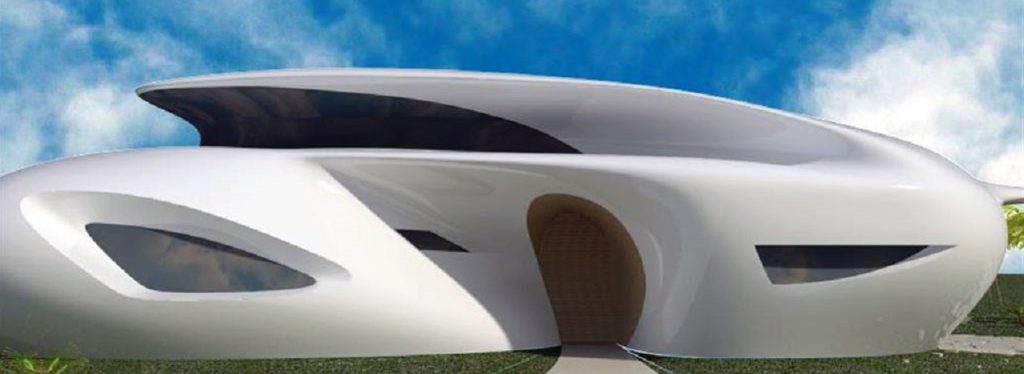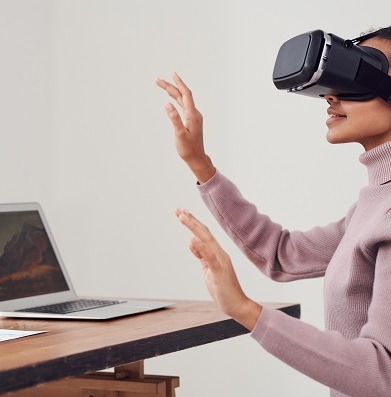
Floating Towns and Flying Cars?
We’ve witnessed astounding high-tech changes in our lifetimes so far. The internet, and then the phones and apps people have invented for it, all jump to mind. Indeed, technology is considered the main growth sector powering today’s financial systems.
What’s next? Here are some fantastic — and reportedly possible — elements of our future lives at home.
Floating Cities, Provisioned by Drones
Burgeoning populations and rising sea levels pose big challenges for real estate along coasts and tidal rivers. Now, people are coming up with answers like waterborne real estate. A prototype is Oceanix City, created by a company named Oceanix. It’s real estate, connected to solar power, placed on prefab, 4.5-acre hexagonal surfaces beside coastal cities. Once these surfaces are linked together, up to 10,000 people can live, work, and farm on them.
Supplies are to be delivered by drones. Commuters are expected to reach the mainland by battery-powered boats, or drones big enough to carry people.
How do these surfaces keep from floating out to sea? They’re affixed to the ocean floor with a building material called biorock. According to the company:
Biorock is a unique ocean technology that produces the only marine construction material that grows, heals itself, and becomes stronger with age.
Well, that’s different. And speaking of material that can heal itself…
Breakthroughs in Building Materials and Methods
At the Delft University of Technology, in collaboration with the South Dakota School of Mines in the United States, researchers are developing self-healing bacterial concrete. What’s this all about? Consider how a crack in the foundation becomes one of the most disturbing findings for a property owner. Such defects are usually hidden until part of the structure crumbles, or until the ground floor floods. The work and costs of repairing concrete are daunting. But researchers have an idea. Maybe concrete can be made to fix its own cracks.
The material they’re making is fortified with stone-making bacteria. The bacteria are prompted to go to work when the concrete first starts breaking down. This innovation will not only save structures; it will save a great deal of metal currently used to hold structures together. It’s not yet cost-efficient for residential construction; yet the concept has interesting potential.
As for methods, we’ve been watching the 3D-printed housing trend. Could it transform the state of mass residential construction? It’s an evolving technology that produces models quickly, while cutting down the use of personnel and resources.
Some researchers are putting concrete and 3D printing together. They’re capturing smokestack emissions, blending them into lime, and coming up with “upcycled concrete” that can be used in 3D printers to make new buildings. New building materials can even be made to power buildings themselves! With tiny solar cells, they can collect sunlight and convert it into energy, which the building can put to immediate use. Private companies as well as the U.S. National Renewable Energy Lab are working on these smart windows, which will turn various hues as they respond to the tiny solar panels.
Robot Cars, Air Taxis, and the Obsolescence of City Parking
Self-driving rideshare cars have already arrived in a few cities. Google’s Waymo autonomous vehicles (AVs) have become a regular feature near Phoenix, Arizona and they’re reportedly coming to San Francisco. GM’s Cruise LLC subsidiary now hopes to start the business of fully autonomous rides in San Francisco this year.
As the EV boom is followed by the AV boom, the whole need for parking in expensive cities will start to fade out. This almost certainly means more conversions of parking space to living space: places for more condos and apartments. Given the central position of cars in our towns and cities, high-tech vehicles can’t help but have a major impact on society.
Meanwhile, passenger drones are being developed to take off from rooftops and hop over traffic. Key companies in this area are Joby Aviation and Uber Elevate, with its UberAIR project projected to launch soon for Los Angeles and Dallas customers.
Ready for a taxi ride at 2,000 feet? It’s happening in our lifetimes. It will be pricey at first, but Uber believes rides will become widely accessible. AT&T Labs head Andre Fuetsch has stated that air taxis could become “a signature use case for 5G.”
Here again, we might wonder if we’ll still need garage space when we buy homes in a few more years. And our commutes could become quite different. Rapid transit through the air would mean homes could be very remote from office hubs.
Robotics and AI in Place of Brokers and Agents

Increasingly, artificial intelligence (AI) and robotics are expected to make real estate purchases more like peer-to-peer transactions. And virtual reality will keep asserting itself in staging and home-shopping experiences.
We tend to imagine clunky headwear when thinking of virtual reality, but there are other models. One day, we might be wearing VR contact lenses, or ordering eyeglasses with VR prescriptions. These techniques are already in use by early adopters, and a house tour is pretty much the perfect use case for assisted or virtual reality tech.
AI-powered personal assistants will keep getting better at understanding our preferences. One day in the not-too-distant future, choosing inspiring house tours could be like picking inflight entertainment. When we make our selections, AI assistants will be able to calculate how much we should offer sellers. AI might even submit these offers for us.
The changes have already started. Many large real estate companies are investing heavily in AI for everything from home searches, to consultations, to investment property management guidance for their clients.
Design-It-Yourself Modular Homes
Modular homes are having a new day in the sun, with the addition of computer-generated design tools for buyers. Using software that enables them to try out variations on-screen before making decisions, home buyers can plan homes to suit their unique preferences. Layout, style, materials, kitchen and bathroom features, decks and porches, windows… All can be tried out virtually before the order is made.
Imagine floor plans, at first drawn in two-dimensional form, coming to life in a 3D array, inviting us to view possible interior design decisions. Walls could be moved and design elements changed — virtually. Art, wall and floor coverings, fixtures, furnishings, and appliances could all be arranged, compared, and rearranged. Space could be visualized as it will look when filled with people, activities, and furnishings.
Well-planned, pre-fab design can be less wasteful and more energy-efficient than traditional design and building processes. From bamboo homes that can withstand hurricanes, to concierge-style guidance that leads buyers through the full design process, there are all kinds of options in today’s pre-fab home sector.
There’s so much going on out there! These are just a few of the futuristic technologies that could change the way we live in homes and move in and out of them. Let’s see what happens.
Supporting References
CNBC.com: Cityzenith Is Helping Amazon and Governments Reduce Emissions From Buildings With Virtual Models (Apr. 4, 2022).
Alison Bentley for Redfin.com: Impress Buyers With Virtual Staging (updated Apr. 14, 2022).
Deeds.com: The Rise of the Digital Pre-Fab Home (Mar. 30, 2022).
And as linked.
Photo credits: Ephraim-Henry Pavie; via Wikimedia Commons (licensed under the Creative Commons Attribution-Share Alike 4.0 International; no changes made). Fauxels, via Pexels.
